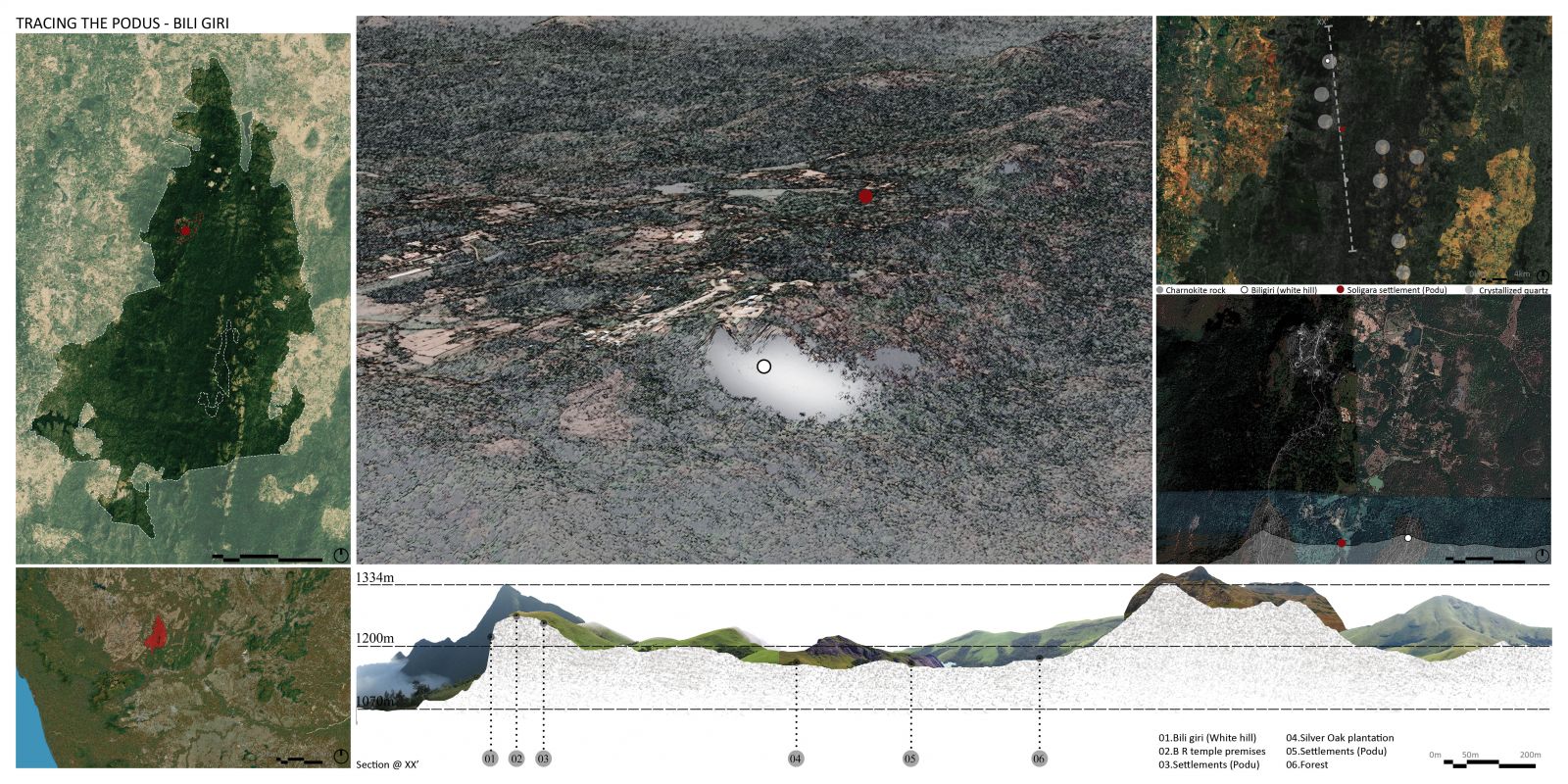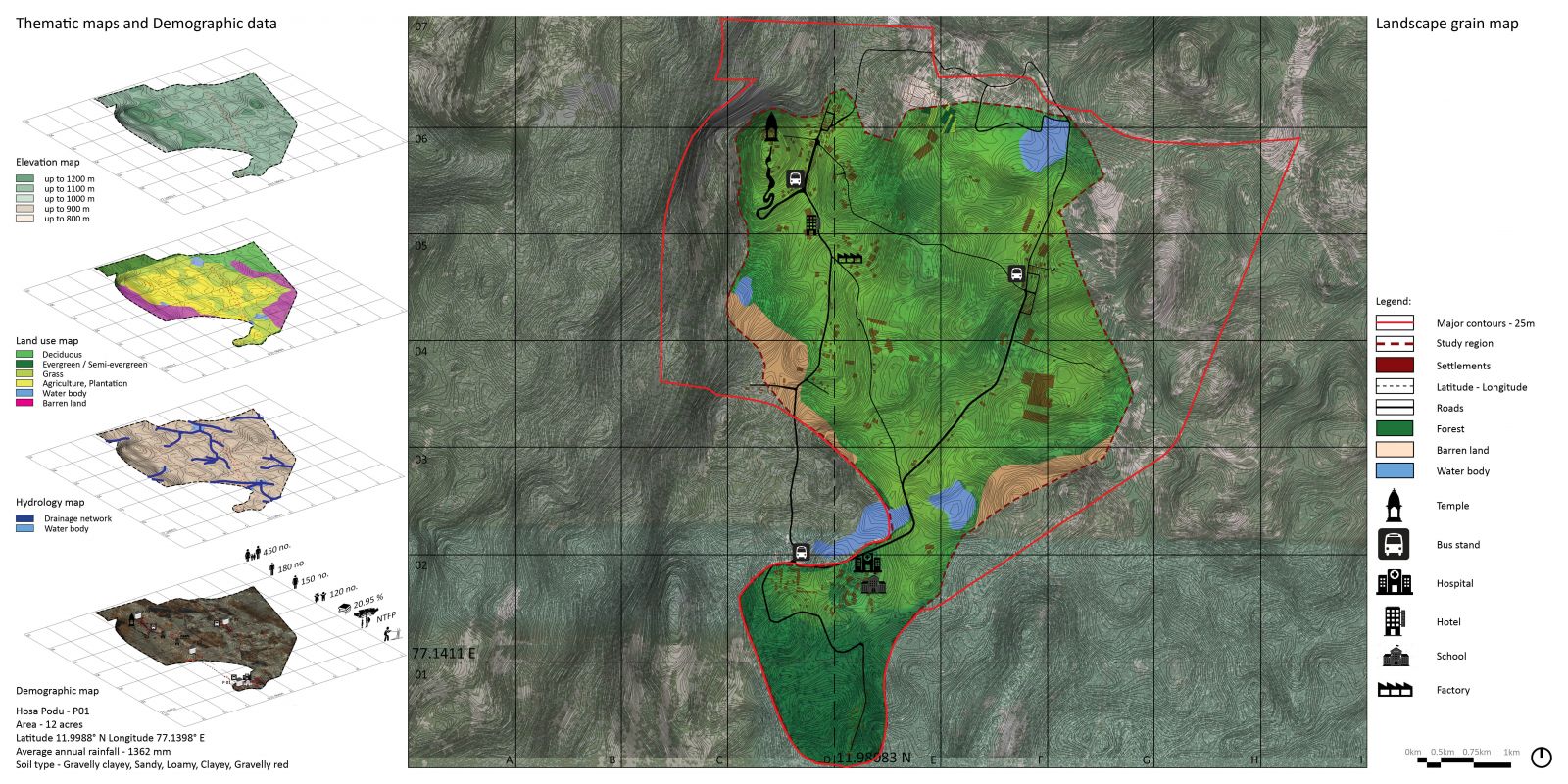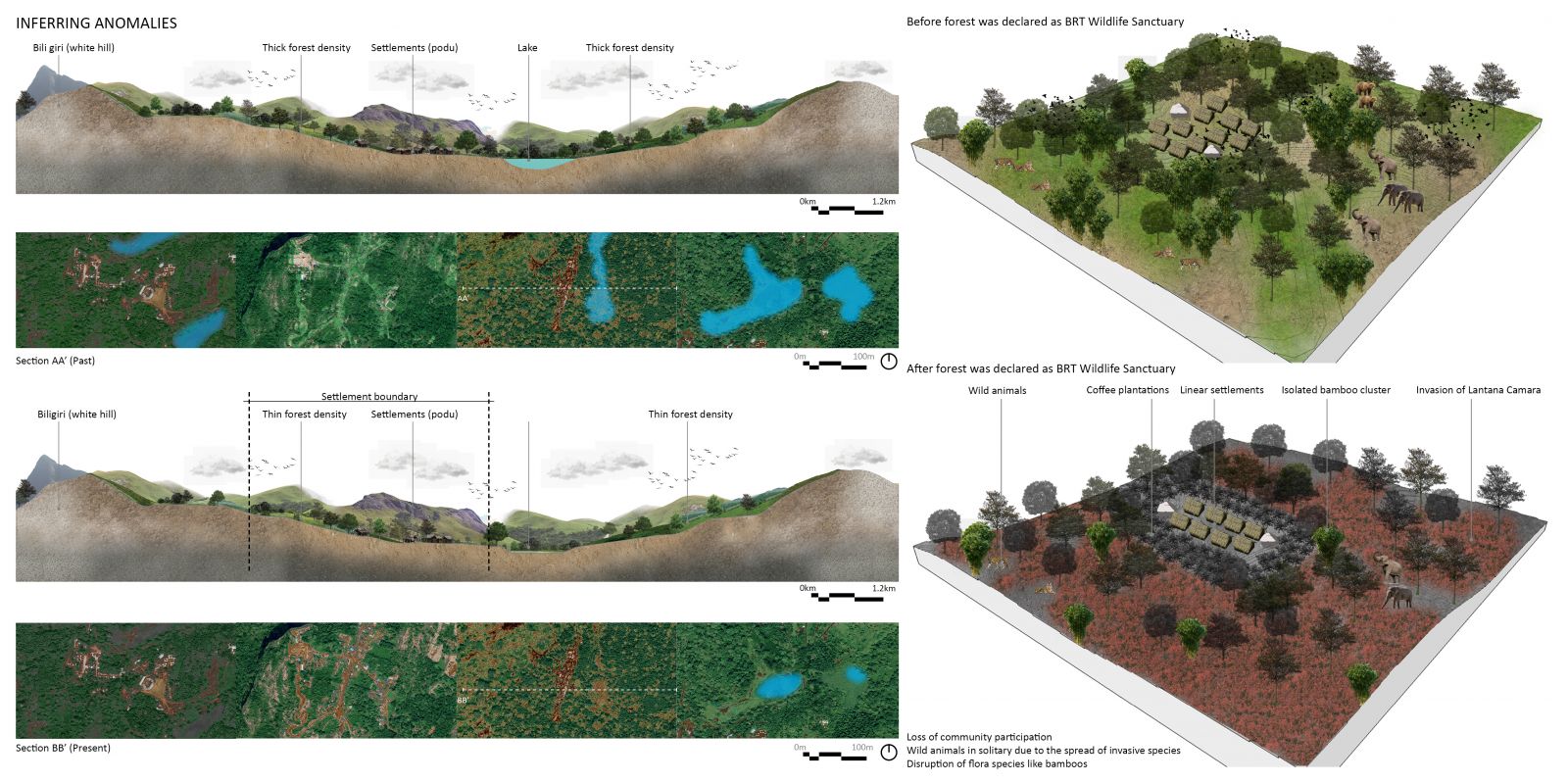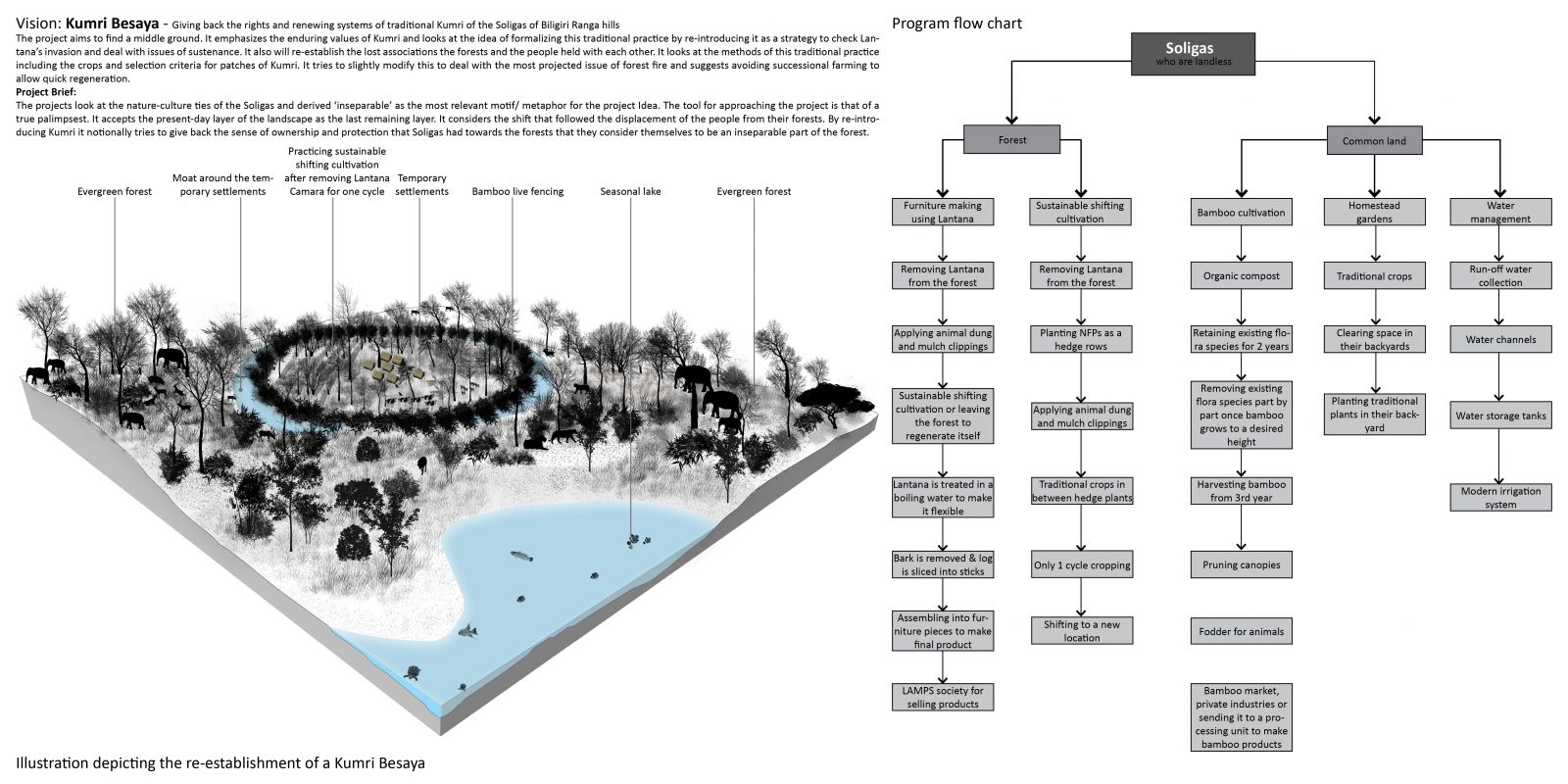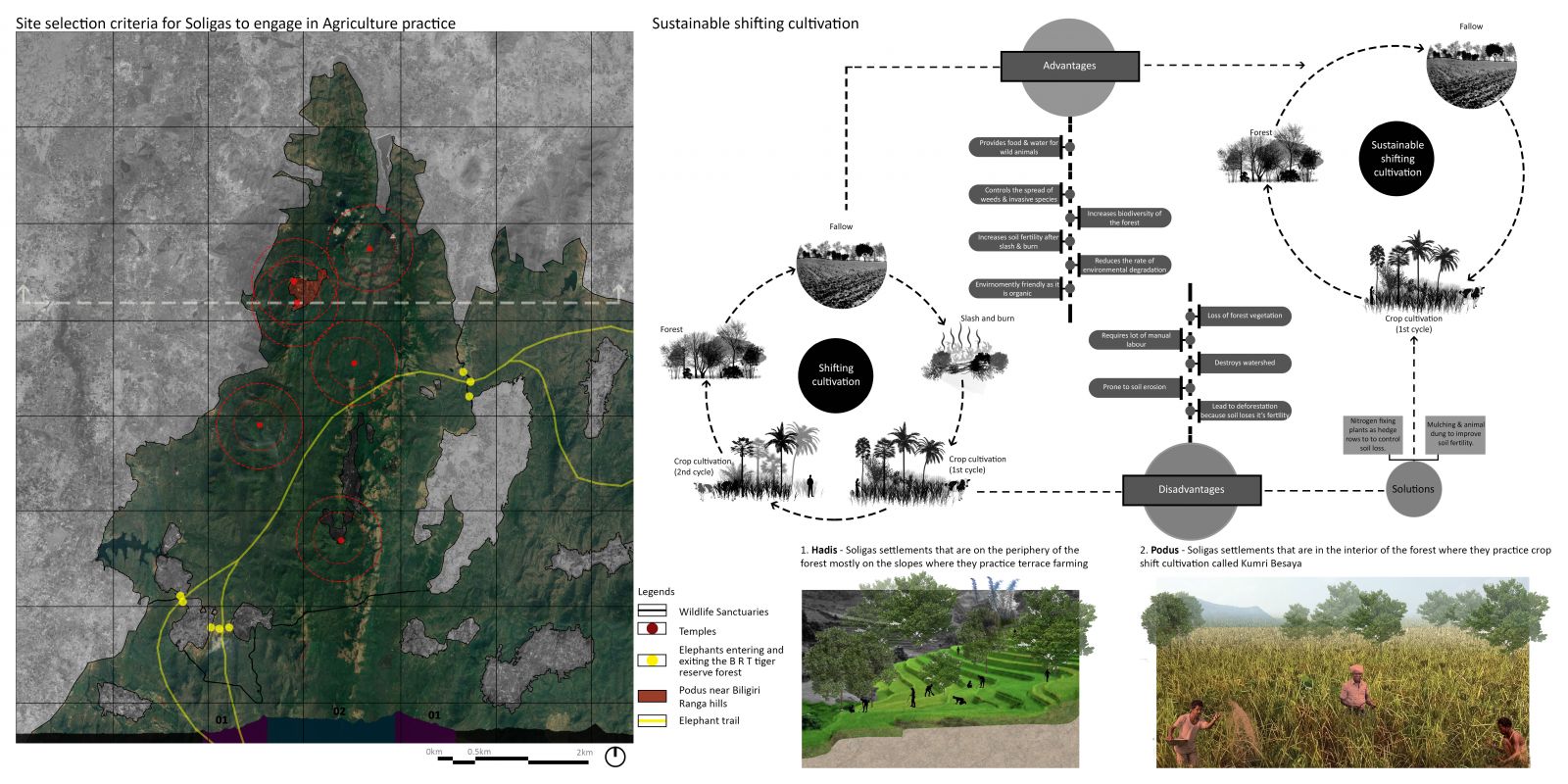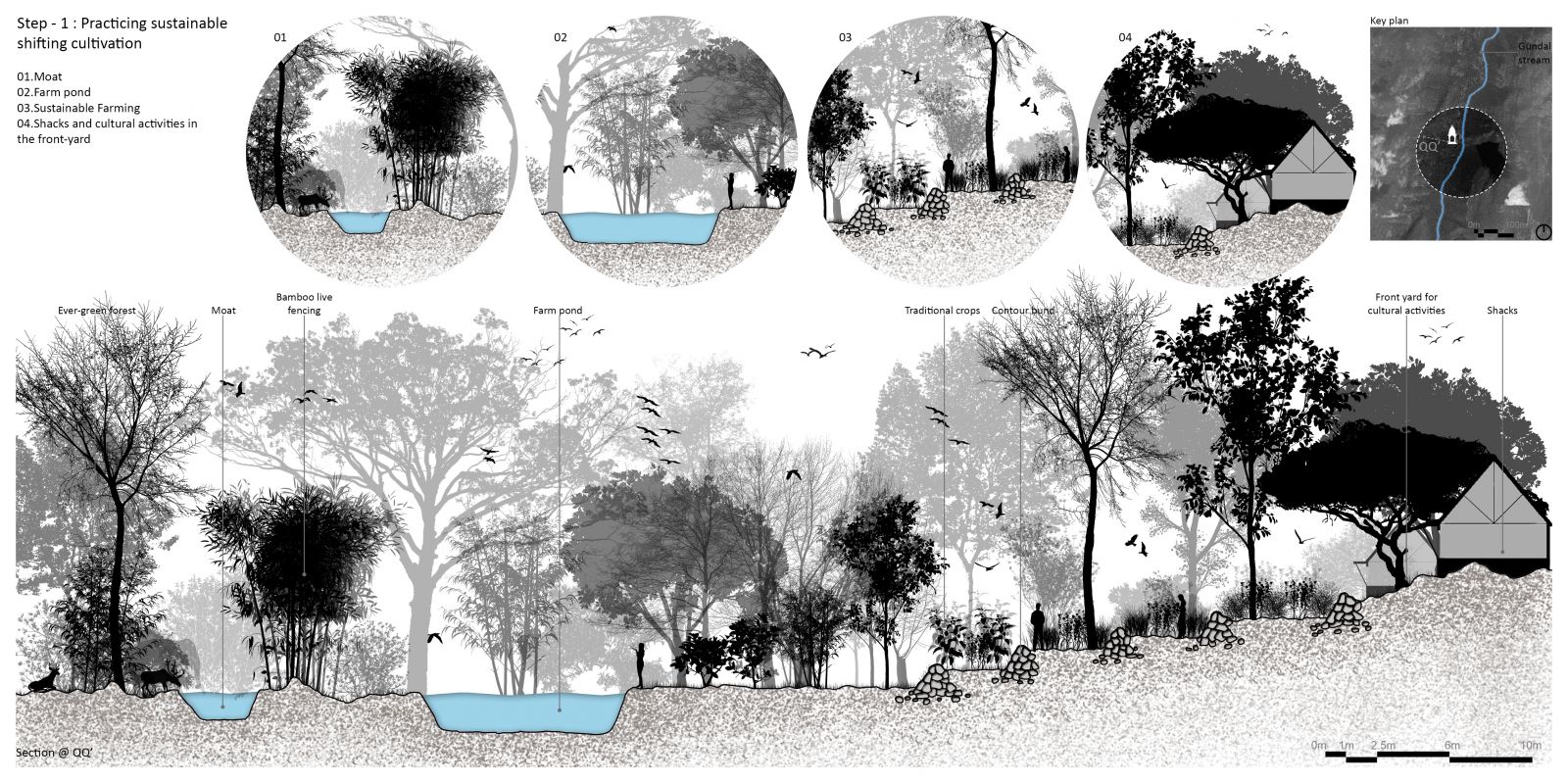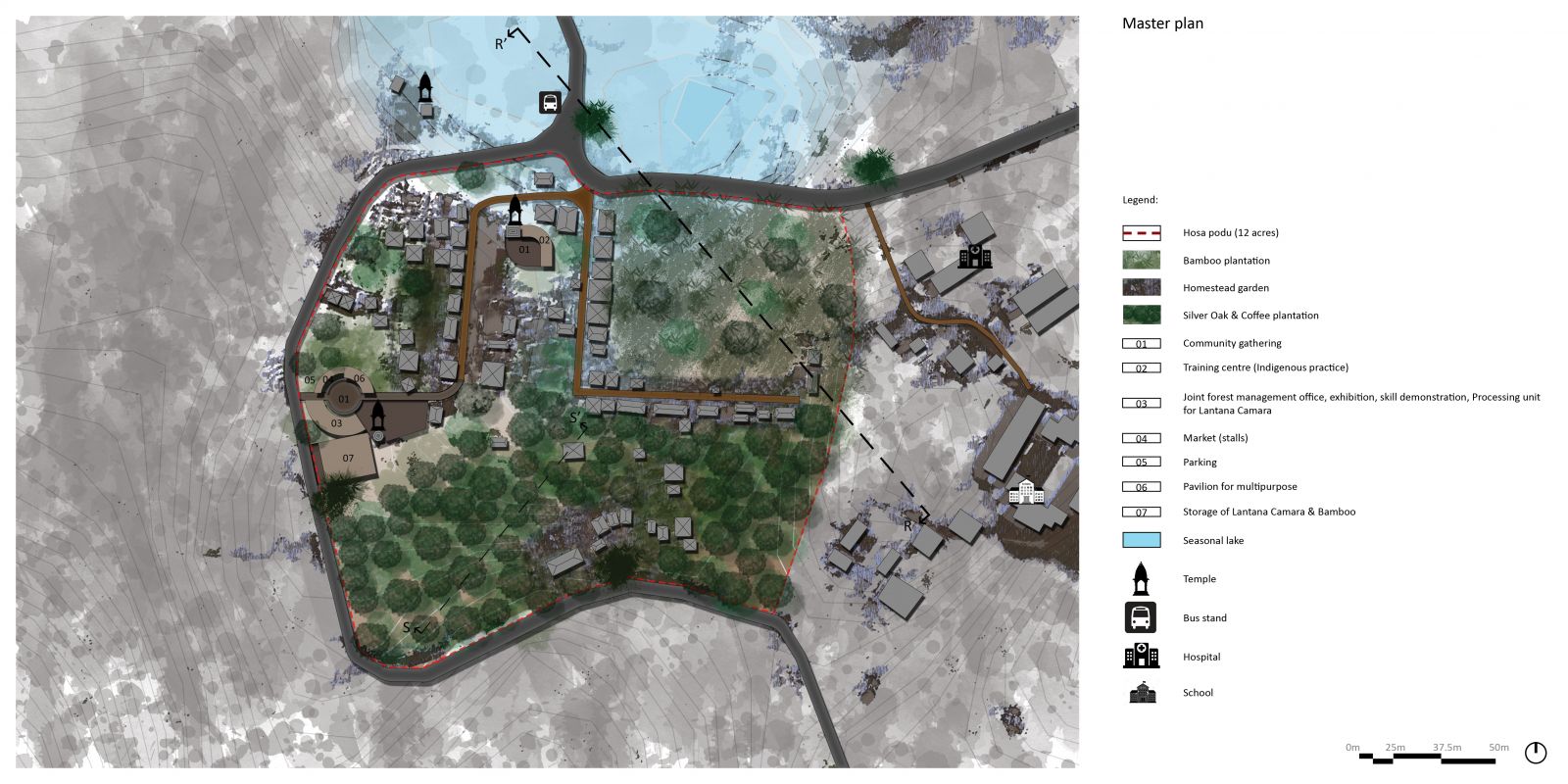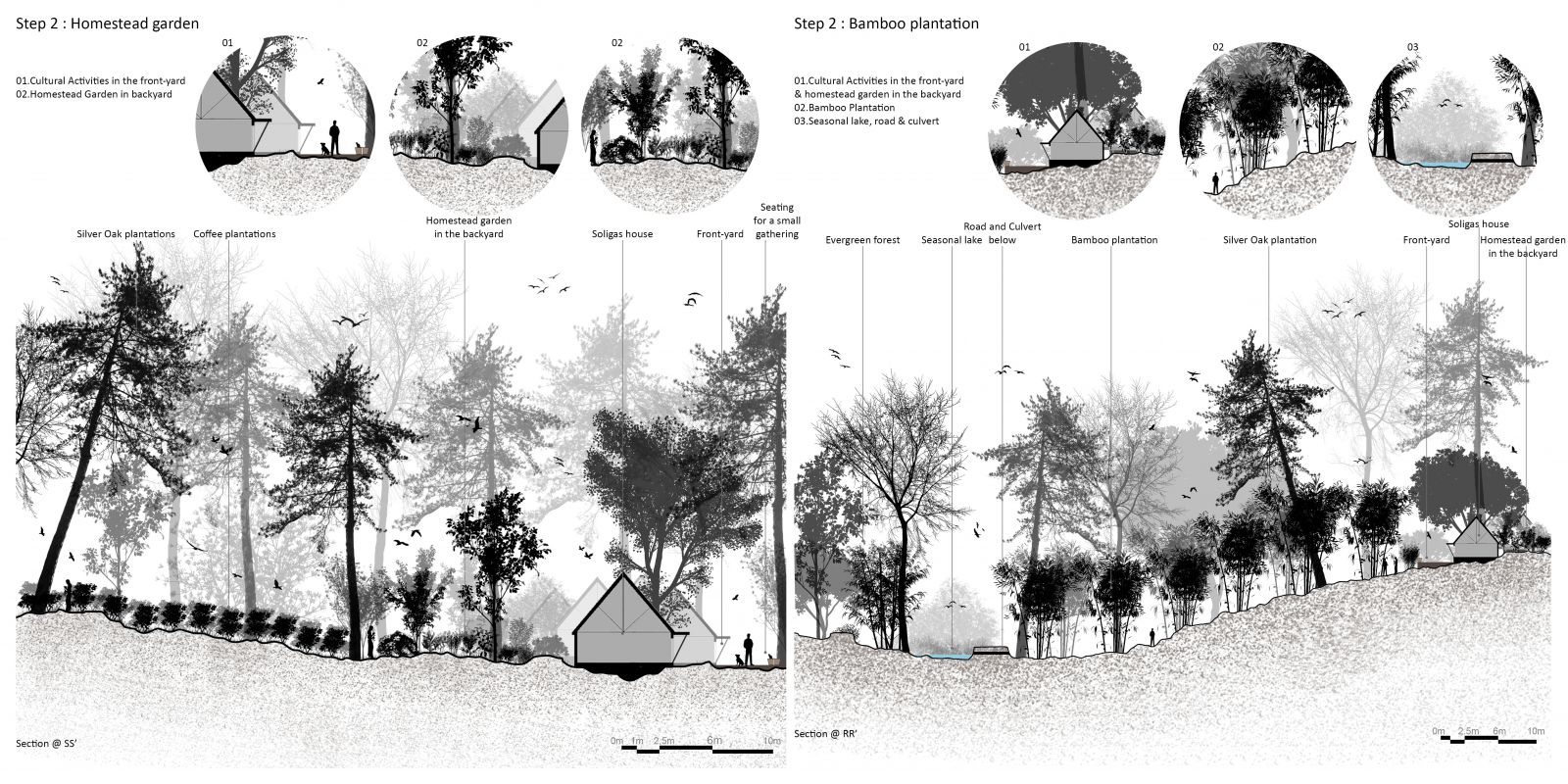- Student RAVEESH M
- Code PLA20277
- Faculty Architecture
- Unit L4 Studio Unit
- Tutor/s Divya Shah
- TA Sankalpa Patel
Premise: Soligas, the indigenous people of the Biligiri Rangaswamy Temple forests of Central Western Ghats had once lived in harmony with their forests in Podus. The Soligas were traditionally hunters and crop shift cultivators who gathered a variety of non-timber forest products (NTFP). When the BRT area was declared as a wildlife sanctuary in 1972, shifting agriculture and hunting were strictly prohibited, and the Soligas, like everyone else, were given a plough and were asked to settle outside the designated forest boundaries. Some were even fortunate to get small pieces of land to practice this settled agriculture. The once rich understory of this forest of dry and moist deciduous type is now invaded by Lantana. Many native species replaced many endemic faunas and their associated habitat was lost.Project Brief: The projects look at the nature-culture ties of the Soligas and derived ‘inseparable’ as the most relevant motif/ metaphor for the project Idea. The tool for approaching the project is that of a true palimpsest. It accepts the present-day layer of the landscape as the last remaining layer. It considers the shift that followed the displacement of the people from their forests. By re-introducing Kumri it notionally tries to give back the sense of ownership and protection that Soligas had towards the forests that they consider themselves to be an inseparable part of the forest. The project is divided into two steps: Step 1 – Kumri Besaya. Looks at re-introducing the ‘Kumri besaya’ as a strategy to control the lantana invasion in sustainable methods. It also gives means of sustenance to the majority of people who didn’t get lands to do settled farming. This strategy hooks itself to the works of NGOs of providing skills and training to the tribe in making products out of Lantana and re-introduces it programmatically through bamboo-based crafts and products. Step 2- Reviving the tradition of bamboo & Homestead garden. This part of the project identifies a common land and introduces permanent programs of skill training, product workshops and cultural areas, and interim cultivation practices in the heart of the settlement for the non-land owning Soligas. The congregation place as a social space was missing in the present layout of Podus. It tries to identify and re-introduce this space which was a significant cultural place for Soligas in their past. In areas of cultivation, it looks at three of four patch typologies – including commercial bamboo cultivation, the introduction of forest food farms or backyard farms, pollinator guilds, and conservation zones for native species of bamboo. These typologies are followed traditionally and systematically by removing existent flora species and carefully planting new flora species in zones. This will create a sense of common rights to farmlands and help strengthen social cohesion. Critical and careful 'learning from tradition’ and ideas of inclusiveness are the way forward.
